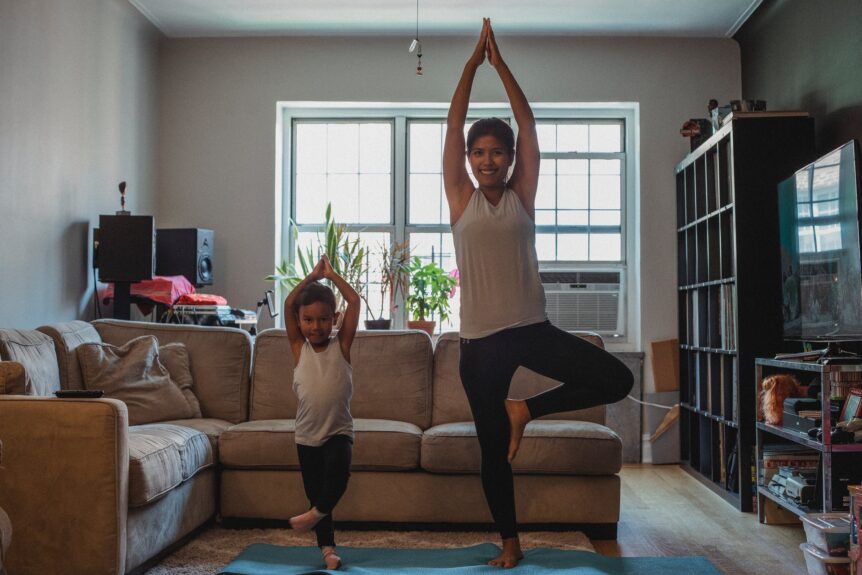We’re going to keep fighting those holiday blues by building our Emotional First Aid Kits (EFAKs). Remember that your EFAK is completely and totally yours. Your kit won’t look like mine, and vice versa. However, I highly recommend having something in your kit that:
- Makes you laugh.
- Makes you move.
- Helps you express how you are feeling in healthy ways.
- Enables you to affirm and nurture yourself. And,
- Helps you rest.
Today we focus on #2 – Movement. Now, it is true that this piece of my Emotional First Aid Kit (EFAK) needs some improvement. Um, okay it needs a LOT of improvement. Nevertheless, moving our bodies is essential for healthy living including improving mood.
Mind-Body Connection
It is undeniable that the mind and body are connected, and definitely influence each other. An article published by Psychology Today reminds us that exercise not only does our bodies good, but it increases the body’s release of important neurochemicals like endorphins, serotonin, and norepinephrine. Caroline Kamau, PhD also writes in Psychology Today that, according to research, all it takes is 21 minutes of aerobic exercise a day to put a huge dent in depression and anxiety! If you’re like me, your preference is to head to the gym to get your sweat on. We know that during the COVID-19 pandemic, that might not be a feasible option for us. However, there are still plenty of ways that we can exercise.
Here are some examples of aerobic exercises one may be able to do safely:
- Running/Jogging
- Walking
- Cycling
- Swimming
- Zumba or some other vigorous dancing like Kukuwa African Dance or Richard Simmons’ Sweatin’ to the Oldies! (Don’t sleep on Richard…he can make you sweat too. *LOL*)
Get Lifting!
For all of my weight-lifting friends, there’s some good news for you too. The New York Times published an article a while back about the potential benefits of weight training for depression. According to the researchers, resistance training acted as a protective factor/shield against depression: “if people began the study with depression, they usually felt better after taking up weight training. And if they started out with normal mental health, they ended the experiment with less chance of having become morose and sad than people who did not train.” They also found that the amount of weight training didn’t seem to be a factor in whether or not mood was improved. In other words, lift even if you start off one day a week! Harvard Health Publishing released a similar article as a part of their women’s health watch. They, too, point to research that indicates strength training as a mood-booster.
Perhaps you’re not like my good friend who just recently built her in-home weight-lifting studio. Perhaps you’re more like me: I don’t have a single dumbbell, kettlebell, or resistance band in my house. (I told you, this piece of my EFAK needs a lot of work…don’t judge!). That’s okay. Apparently, using everyday household items is a good start (e.g., water bottles, cans, safely lifting furniture), as well as working with your body’s weight. Check out this at-home body weight workout from Dick’s Sporting Goods.
You’re A Warrior!
And lastly for the sake of this post, let’s not forget about the power of Yoga in boosting mood and well-being! Several studies suggest that yoga has several psychological, cognitive, and emotional benefits alongside the physical ones. This article posted by UC Santa Cruz gives a good overview of Yoga and its benefits. Likewise, Harvard Health Publishing once again comes through with some real knowledge gems about how yoga can mitigate stress responses to relieve anxiety and depression. Here is where I will tip my hat to one of my favorite yogis, Jessamyn Stanley. She’s not your conventional yoga teacher (if there is such a thing), she’s based in Durham, North Carolina (yay, NC!), and she’s a Sistah (#blackgirlmagic). If you’re feeling a little intimidated to start your practice, I strongly suggest you consider beginning your practice with her? And, if you couldn’t tell from the subheading, my favorite poses are variations of Warrior. (But don’t be too impressed because I have yet to establish a consistent yoga practice. *face palm*)
How Much Movement?
But how much movement should we incorporate to improve our mental health? Well, according to the Mayo Clinic, 30 minutes of exercise three to five times each week should pretty much do it. Now, before you fly off the handle, let’s do the math. Following this guideline means devoting 90 – 150 minutes out of 10,080 minutes per week. That’s like 1.5% of the total amount of time we have in a week! We can do that, right? Okay, maybe you’re still not convinced. That’s okay. Smaller amounts of exercise (15 minutes per segment, for example), may also help with depression and anxiety too. The bottom line is don’t avoid exercise if you want to beat the blues.
What movement(s) are you going to start now to feel better?
